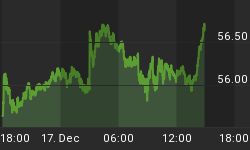This morning's activity in the S&P 500 futures underscores what the market cares about. The market is not focused on employment (better than expected this morning), earnings (good), or valuations (respectable). The market cares about one thing - money printing; specifically, having the ECB print money to buy Italian and Spanish bonds.
During a press conference this morning, the head of the ECB disappointed markets by clarifying previous remarks relative to the "sequencing" in Europe. The market thought the ECB was ready to step up their bond buying activity if leaders moved closer to a European fiscal union. According to the Wall Street Journal's Market Beat:
In response to a question during his press conference, Draghi just denied signaling that the ECB would embark on extra sovereign-debt purchases last week, which has taken stock futures by surprise. This is disappointing those who were hoping for some promise that the ECB would back up the money truck and buy all the sovereign debt lying around, if only the EU would agree on a tighter union and jump through some other invisible hoops. That's not happening.
Draghi also said the ECB didn't consider a bigger rate cut than the rather thin 25-basis-point cut it delivered this morning and that even that decision was not unanimous -- signaling there are plenty of hawks on the ECB who aren't in a hurry to back up that money truck.
Piling on the disappointing comments, Draghi also poured cold water on the idea of the ECB lending to the IMF to lend to European governments, or whatever the goofy shell game idea du jour was.
S&P futures dropped roughly 20 points after the ECB President's remarks. It's all about money printing - all the time in this debt-saddled world we live in. You may not like it (we don't), but it is what it is. This morning's developments change the short-term outlook considerably. Unless the market gets something positive from the ECB in the coming days, the S&P 500 may continue to struggle near its 200-day moving average.
The problems in Europe remain very serious. Stocks and commodities, especially over the next three months, remain vulnerable to significant downside. The NASDAQ (QQQ) has continued to lag the S&P 500 (SPY), which sends a concerning signal for both markets. On Wednesday, the S&P 500 stalled again just below the downward-sloping 200-day moving average.

While we remain open to another push higher, numerous longer-term bearish signals remain, including a Dow Theory sell signal. In the video below, originally released on November 30, we explore the question "How Long Do Bear Markets Last?" using 112 years of market data. We remain on a Dow Theory sell signal, a signal that has an excellent track record of forecasting ongoing problems for stocks.

The bulls still control the intermediate-term trend. The bears still control the long-term trend. Therefore, investors should remain cautious and skeptical of any money-printing induced rallies in the days and weeks ahead.















